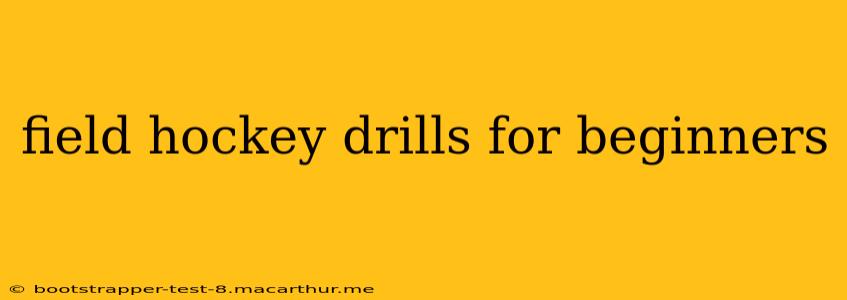Field hockey is a fast-paced, exciting sport that demands skill, teamwork, and strategy. Whether you're a complete beginner or looking to brush up on your fundamentals, mastering basic skills through consistent practice is key. This guide provides a selection of effective field hockey drills perfect for beginners, focusing on building a strong foundation in ball control, passing, and shooting.
Getting Started: Basic Ball Control Drills
Before tackling more advanced drills, it's crucial to establish comfort and control with the stick. These drills focus on developing fundamental stick skills that are the building blocks of more complex plays.
1. Dribble Around Cones:
This classic drill helps improve stick control and agility. Set up a series of cones in a small area (e.g., a 10x10-yard square). Practice dribbling the ball around the cones, focusing on keeping the ball close to your stick and maintaining a steady pace. Gradually increase the speed and the complexity of the cone pattern as you improve.
2. Push and Stop:
This drill emphasizes precision and control. Push the ball a short distance, then bring it to a complete stop using your stick. Repeat this action, focusing on the accuracy of your push and the smoothness of your stop. Gradually increase the distance you push the ball.
3. Ball Lift and Catch:
This drill improves your ability to lift and control the ball. Lift the ball into the air using the flat side of your stick, and then catch it cleanly on your stick. Practice lifting and catching at different heights and distances. This is crucial for more advanced skills later on.
Passing Drills: Teamwork and Accuracy
Passing is the lifeblood of field hockey, requiring accuracy, timing, and effective communication with your teammates. These drills focus on improving the precision and consistency of your passes.
4. Short Passing:
Pair up with a partner and practice short passes to each other. Focus on keeping the passes low and accurate. Experiment with different types of passes (e.g., push passes, flick passes). Vary the distance between you gradually as your accuracy improves.
5. Long Passing:
This drill builds on the short passing drill, focusing on hitting long, accurate passes. Increase the distance between you and your partner. Aim for a consistent pace and pinpoint accuracy. Concentrate on the appropriate technique and follow-through for long passes.
Shooting Drills: Power and Precision
Shooting is a critical aspect of field hockey, demanding accuracy, power, and precision. Beginners should focus on developing a consistent shooting technique before aiming for power.
6. Stationary Shooting:
Start with stationary shooting from a short distance. Focus on your grip, technique, and follow-through. Aim for accuracy before attempting powerful shots. Gradually increase the distance as you become more comfortable with the technique.
7. Shooting on the Run:
Once you feel confident with stationary shooting, practice shooting on the run. This is a more realistic representation of game situations. Focus on maintaining control of the ball while you’re moving and achieving accuracy in your shots.
H2: What are some common mistakes beginners make in field hockey?
Beginners often struggle with maintaining proper posture and stick handling, leading to inaccurate passes and shots. They may also lack awareness of their surroundings and struggle with teamwork, coordination, and timing. Over-hitting the ball, especially in passing, is a common problem, resulting in poor accuracy and control.
H2: What equipment do I need to play field hockey?
To start, you'll need a field hockey stick (choose one suitable for your height and playing style), a mouthguard, shin guards, and appropriate athletic footwear. As you progress, you may want to invest in a field hockey ball and other protective gear as needed.
H2: How can I improve my fitness for field hockey?
Field hockey is a physically demanding sport requiring stamina, agility, and speed. Include cardiovascular exercises, strength training, and agility drills in your training routine to enhance your fitness levels. Regular practice sessions, in addition to focused fitness training, will improve your overall performance on the field.
H2: Are there any drills to improve my fitness for field hockey?
Yes! Interval training, including sprints and recovery periods, improves speed and stamina. Agility drills such as cone drills and ladder drills improve footwork and agility. Strength training focusing on core strength and leg muscles increases power and helps prevent injuries.
By consistently practicing these drills and focusing on proper technique, beginners can quickly develop their skills and build a solid foundation in field hockey. Remember to prioritize safety, have fun, and enjoy the process of learning this exciting and rewarding sport.
